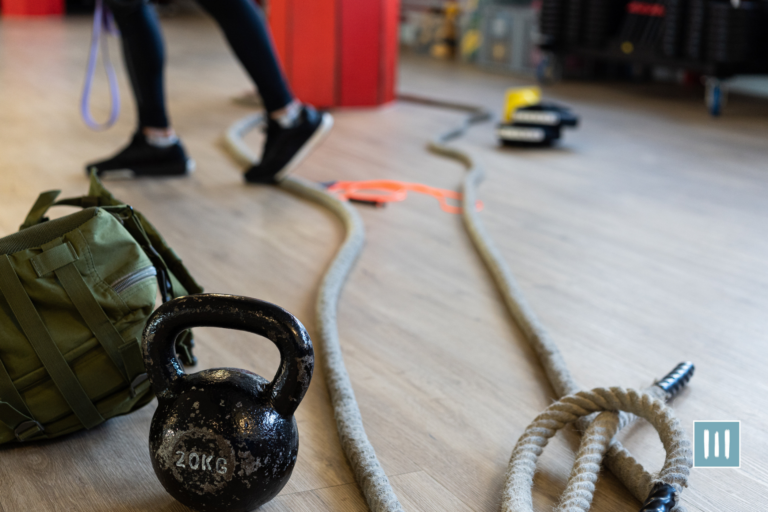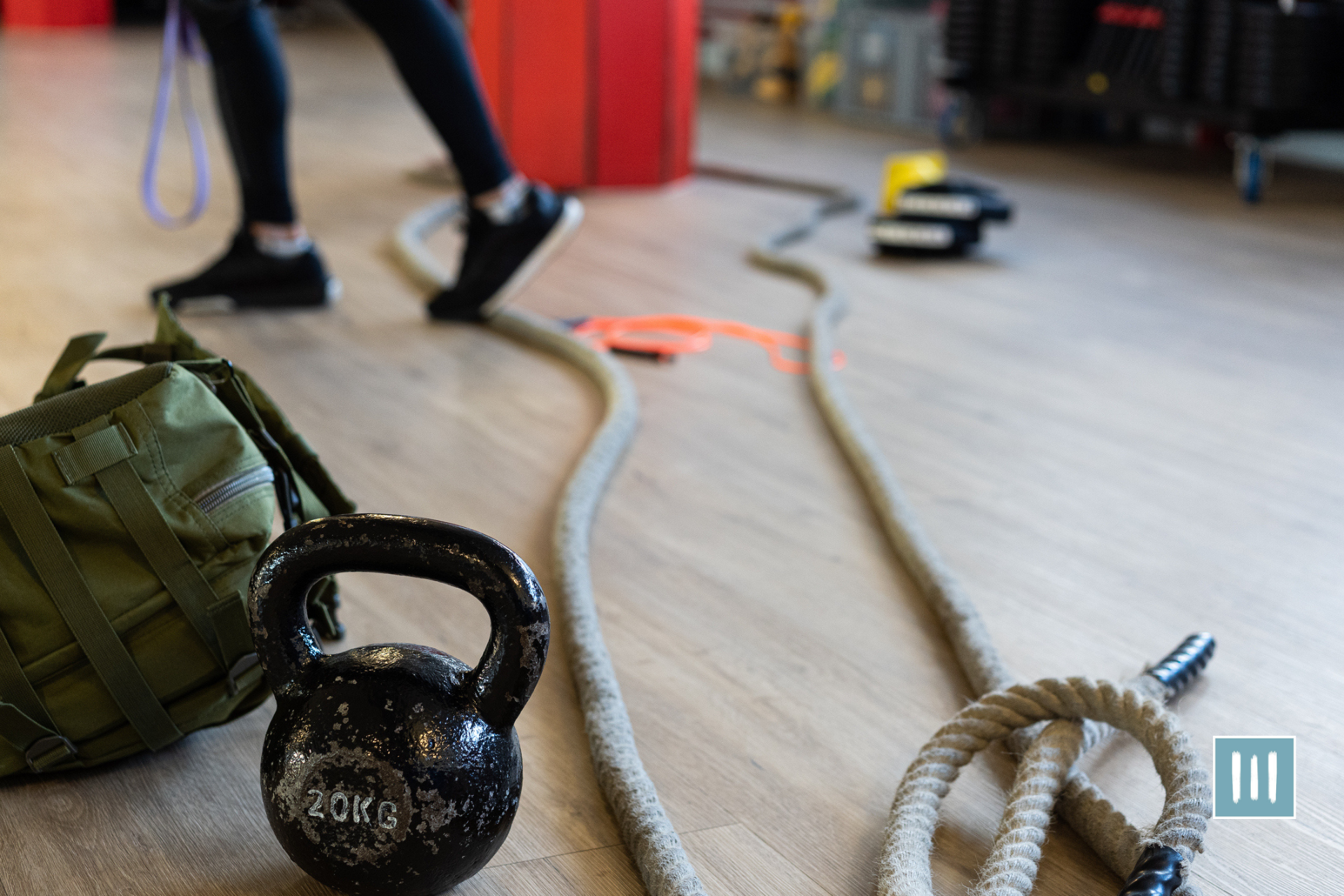Do you want to achieve a higher level of functional strength and improve your overall performance in daily activities? If so, then you’re in the right place!
Functional training, also known as functional fitness, focuses on exercises that mimic real-life movements and help you perform everyday tasks with ease. Whether you’re an athlete, a fitness enthusiast, or simply someone who wants to improve their quality of life, incorporating functional training into your workouts can be highly beneficial.
In this article, we will explore eight essential tips for effective functional training that will help you become the master of your own body.
From setting clear goals and understanding the principles of functional training to incorporating compound movements and prioritizing proper form, we will cover all the key aspects that will help you master this type of training.
So, get ready to take your fitness journey to new heights and unlock your true potential with these eight essential tips for effective functional training.
Key Takeaways
- Focus on exercises that mimic real-life movements to improve overall performance in daily activities.
- Understand the principles of functional training, such as specificity and progression, to maximize results.
- Set clear goals to ensure effective functional training.
- Incorporate compound movements to make workouts more efficient and effective.
Setting Clear Goals for Your Training
Setting clear goals is essential because it gives you direction and purpose. Without clear goals, you may find yourself wandering aimlessly in your workouts, not knowing what you’re working towards. However, when you have specific goals in mind, it becomes easier to create a plan and stay motivated.
When setting goals for your functional training, it’s important to be specific and realistic. Instead of setting a vague goal like “get in shape,” try setting a specific goal like “increase my deadlift by 20 pounds in 3 months.” This gives you a clear target to work towards and allows you to track your progress along the way.
Additionally, make sure your goals are achievable within a reasonable timeframe. Setting unrealistic goals can lead to frustration and disappointment. Start with smaller, attainable goals and gradually increase the difficulty as you progress.
As you set your goals, it’s also important to consider your personal interests and motivations. What aspects of functional training do you enjoy the most? Is there a particular skill or movement you want to master? By aligning your goals with your interests, you’ll be more likely to stay committed and enjoy the process of achieving them.
Functional training is not just about the end result, but also about the journey of self-improvement. So take the time to set clear goals that excite and challenge you, and watch as your functional training journey becomes even more fulfilling.
Understanding the Principles of Functional Training
Functional training focuses on movements that mimic everyday activities, helping you build strength, flexibility, and stability that can be applied to real-life situations. By incorporating functional training into your workout routine, you can improve your overall physical performance and enhance your quality of life.
One of the key principles of functional training is specificity. This means that your exercises should closely resemble the movements you want to improve in your daily life or sport. For example, if you want to improve your ability to lift heavy objects, incorporating exercises like deadlifts or squats into your training routine would be beneficial.
Another principle is progression, which involves gradually increasing the intensity or difficulty of your exercises over time. This helps to ensure that you continue to challenge your body and make progress towards your goals.
By understanding and applying these principles of functional training, you can maximize the effectiveness of your workouts and unlock your body’s hidden potential.
So, embrace the challenge and start incorporating functional training into your routine to take your fitness journey to the next level.
Incorporating Compound Movements into Your Workouts
One way to amp up your workouts and get maximum results is by incorporating compound movements. Compound movements are exercises that work multiple muscle groups and joints at the same time, making them incredibly efficient and effective. Instead of isolating specific muscles, compound movements challenge your body to work as a whole, improving overall strength, stability, and coordination.
Some popular compound movements include squats, deadlifts, lunges, bench presses, and rows. These exercises engage multiple muscle groups, such as the legs, glutes, core, and upper body, all in one movement. This not only saves time but also helps to improve functional strength, which is essential for everyday activities and sports performance.
Incorporating compound movements into your workouts can be as simple as replacing isolation exercises with compound exercises. For example, instead of doing bicep curls, try doing chin-ups or pull-ups, which not only target the biceps but also engage the back and core muscles.
Additionally, incorporating compound movements into your routine can help prevent muscle imbalances, as all the muscles involved in the movement are being worked together.
When performing compound movements, it’s important to focus on proper form and technique. Start with lighter weights and gradually increase the load as you become more comfortable and confident with the movement. It’s also important to listen to your body and not push yourself too hard, as this can lead to injury.
With dedication and practice, you’ll soon see the benefits of incorporating compound movements into your workouts and achieving the functional strength and fitness you desire.
Balancing Strength and Flexibility
To achieve a well-rounded functional training routine, it’s important to find a balance between building strength and increasing flexibility so that you can perform at your best.
While strength training is important for building muscle and power, flexibility training is equally important for improving range of motion and preventing injuries.
Finding the right balance between the two will help you optimize your performance and reach your fitness goals.
When it comes to balancing strength and flexibility, it’s important to focus on functional movements that engage multiple muscle groups and promote mobility.
Incorporating exercises like squats, lunges, deadlifts, and push-ups into your routine will help you build strength while also improving flexibility.
Additionally, incorporating dynamic stretches and mobility exercises into your warm-up and cool-down routines will help improve your flexibility and prevent muscle imbalances.
It’s important to listen to your body and make adjustments as needed.
By finding the right balance and incorporating both strength and flexibility training into your routine, you’ll be on your way to achieving proficiency in functional training and performing at your best.
Incorporating Functional Training Equipment
Incorporating functional training equipment can truly enhance your workout experience and take your fitness journey to the next level. By utilizing equipment such as resistance bands, kettlebells, and medicine balls, you can target specific muscle groups and improve overall strength and stability. These tools allow for a wide range of exercises that mimic real-life movements, helping you develop functional strength that translates to everyday activities.
One of the great benefits of functional training equipment is its versatility. Whether you’re a beginner or an advanced athlete, there is a piece of equipment suitable for your fitness level. Resistance bands, for example, come in different levels of resistance, allowing you to gradually increase the intensity of your workouts as you get stronger.
Kettlebells are excellent for building strength and power, while medicine balls can be used for explosive movements and core stabilization exercises. By incorporating these tools into your routine, you can challenge your body in new and exciting ways, keeping your workouts fresh and engaging.
Start by incorporating one or two pieces of equipment into your workouts and gradually increase the complexity and intensity of your exercises. As you become more proficient, you can experiment with different combinations of equipment to target specific muscle groups or movement patterns.
With time and practice, you’ll develop a deep understanding of how functional training equipment can enhance your overall fitness and help you achieve your goals.
Varying Your Exercises and Repetitions
Mix it up by trying different exercises and changing the number of repetitions, creating a dynamic and engaging functional training routine. One of the keys to effective functional training is keeping your body guessing. By constantly challenging yourself with new exercises and varying the number of repetitions, you not only prevent boredom but also stimulate different muscle groups and enhance overall performance.
So, don’t be afraid to step out of your comfort zone and try something new. Maybe one day you focus on strength training exercises like squats and deadlifts, while the next day you incorporate more cardio-based exercises like burpees and mountain climbers. By constantly changing up your routine, you’ll keep your body on its toes and continue to improve your functional fitness.
In addition to trying different exercises, varying the number of repetitions can also have a significant impact on your functional training. While it’s important to challenge yourself and push your limits, it’s equally important to listen to your body and avoid overexertion. By changing the number of repetitions, you can strike the perfect balance between intensity and recovery.
For example, one day you may choose to do fewer repetitions with heavier weights to focus on building strength, while another day you may opt for higher repetitions with lighter weights to improve muscular endurance. This variation not only keeps your workouts interesting but also ensures that you’re constantly challenging your muscles in different ways.
So, don’t be afraid to mix it up and experiment with different exercises and repetitions. Your body will thank you for it as you continue to progress on your journey.
Prioritizing Proper Form and Technique
Make sure you prioritize proper form and technique to get the most out of your functional workouts. When it comes to functional training, it’s not just about how much weight you can lift or how many reps you can do. It’s about performing exercises with precision and control to activate the right muscles and improve your movement patterns. By focusing on proper form and technique, you can enhance your strength, stability, and overall performance.
To help you prioritize proper form and technique, here are some key tips to keep in mind:
| Tip | Description |
|---|---|
| 1. Start with the basics | Before diving into complex exercises, master the fundamental movements. This includes squats, lunges, push-ups, and planks. By building a strong foundation, you’ll be able to progress to more advanced exercises with ease. |
| 2. Engage your core | Your core is the powerhouse of your body. Engaging your core throughout your workouts will not only improve your stability but also protect your spine. Focus on maintaining a neutral spine and activating your core muscles during each exercise. |
| 3. Control your movements | Avoid using momentum or swinging your body to complete an exercise. Instead, focus on controlled movements, emphasizing the eccentric (lowering) phase of each exercise. This will maximize muscle activation and help prevent injuries. |
By prioritizing proper form and technique, you’ll not only see better results from your functional training but also reduce the risk of injury. So take the time to learn the basics, engage your core, and control your movements. Your body will thank you for it, and you’ll be well on your way to mastering functional training. Keep challenging yourself and striving for improvement, and you’ll continue to progress in your fitness journey.
Progressing and Challenging Yourself Over Time
Challenge yourself to push beyond your limits and continually strive for progress in your functional training journey. Functional training is all about improving your overall strength, mobility, and stability, and the key to achieving this is by consistently challenging yourself and pushing your boundaries.
As you progress in your functional training, it’s important to gradually increase the difficulty of your exercises. This can be done by adding more weight, increasing the number of repetitions, or trying more advanced variations of the exercises. By continually challenging yourself, you will not only build strength and endurance, but you will also keep your workouts interesting and prevent plateaus.
In addition to increasing the difficulty, it’s also important to set specific goals for yourself. Whether it’s being able to perform a certain number of push-ups or squatting a certain weight, having a goal to work towards can provide motivation and a sense of accomplishment.
As you achieve these goals, don’t be afraid to set new ones and continue pushing yourself to new heights. There will be ups and downs, and there may be times when you feel like you’ve hit a plateau. During these times, it’s important to stay patient and trust the process.
Keep challenging yourself, stay consistent with your training, and you will continue to see improvements over time. So, embrace the challenge and keep pushing yourself in your functional training journey.
The rewards of progress and mastery are waiting for you, and with each new challenge, you will become stronger, more resilient, and better equipped to take on whatever life throws your way.
Frequently Asked Questions
What are the potential risks or injuries associated with functional training?
When doing functional training, it’s important to be aware of potential risks and injuries. Overexertion, muscle strains, and joint pain are common. Remember to listen to your body, warm up properly, and use the correct form to minimize these risks.
How can functional training benefit individuals with specific health conditions or limitations?
Functional training can greatly benefit individuals with specific health conditions or limitations by improving their overall strength, flexibility, and coordination. It can also help alleviate pain, enhance balance, and increase mobility, allowing for a better quality of life.
Are there any specific warm-up exercises recommended before starting a functional training session?
Before diving into a functional training session, it’s crucial to warm up properly. Engage your muscles and prepare your body with exercises like dynamic stretching, bodyweight movements, and light cardio. Get ready to conquer your workout!
How frequently should functional training be incorporated into a fitness routine for optimal results?
To achieve optimal results, incorporate functional training into your fitness routine 2-3 times a week. This frequency allows for proper muscle recovery and growth while ensuring you have enough time for other types of workouts. Keep pushing for mastery!
Can functional training help improve sports performance and athletic abilities?
Absolutely! Functional training is a game-changer for athletes. By mimicking real-life movements, it hones your skills, enhances coordination, and boosts power. You’ll feel like a pro on the field, dominating the competition.

















